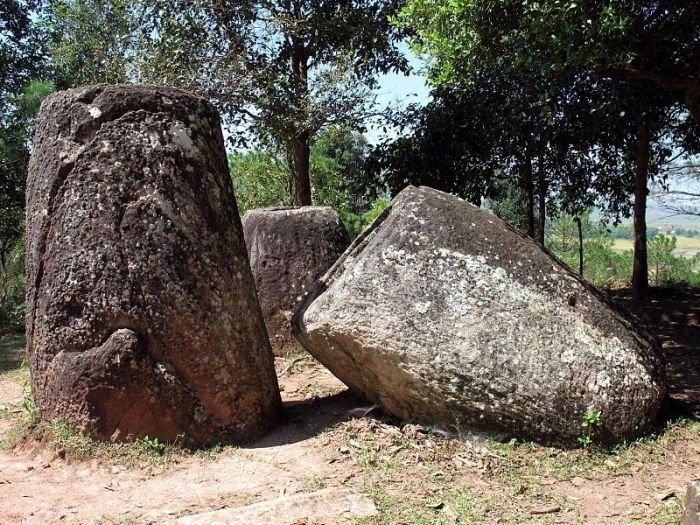|
|
The Plain Of Jars, Laos
|
The majority of the jars are sandstone and have been manufactured with a degree of knowledge of what materials and techniques were suitable. It is assumed that Plain of Jars' people used iron chisels to manufacture the jars although no conclusive evidence for this exists. Regional differences in jar shape have been noted. While these differences in most cases can be attributed to choice and manipulation of rock source, form differences, such as small apertures and apertures on both ends (double holed jars) which would affect the use of the jar have been recorded in one district only.
The cave at Site 1 is a natural limestone cave with an opening to the northwest and two man-made holes at the top of the cave. These holes are interpreted as chimneys of the crematorium. The French geologist and amateur archaeologist Madeleine Colani excavated in side the cave in the early 1930 and found archaeological material to support a centralized crematorium theory. Colani also recorded and excavated at 12 Plain of Jar's sites and published two volumes with her findings in 1935.
The material findings and context led her to the interpretation of the Plain of Jars as an Iron Age burial site. Inside the jars, she found embedded in black organic soil coloured glass beads, burnt teeth and bone fragments, sometimes from more than one individual. Around the stone jars, she found human bone, pottery fragments, iron and bronze objects, glass and stone beads, ceramic weights and charcoal. The bone and teeth inside the stone jars show signs of cremation, while the burials surrounding the jars yield unburnt secondary burial bones.
No further archaeological research was conducted until November 1994 when Professor Eiji Nitta of the Kagoshima University in collaboration with Lao Archaeologist Thongsa Sayavongkhamdy surveyed and mapped Site 1. Nitta argues that the surrounding burial pits are contemporary to the stone jar as they are cut into the ancient surface on which the jar was placed. Nitta sees the stone jar as a symbolic monument to mark the surrounding burials.
|
|









